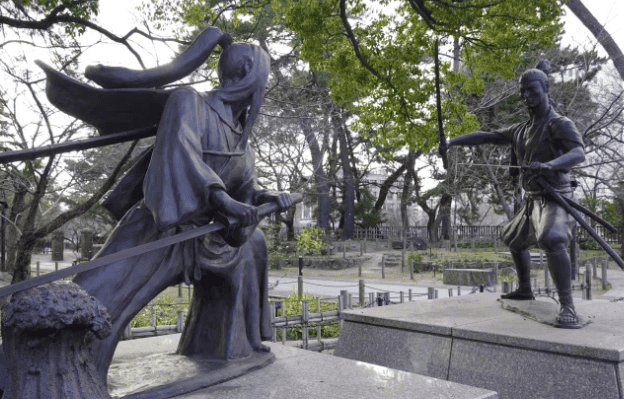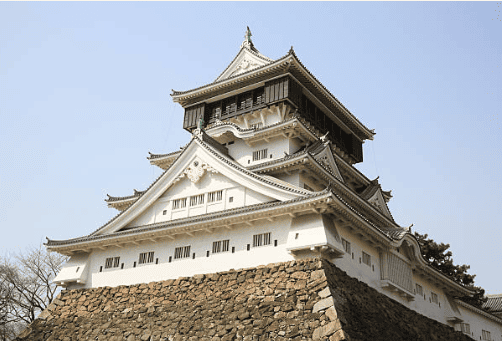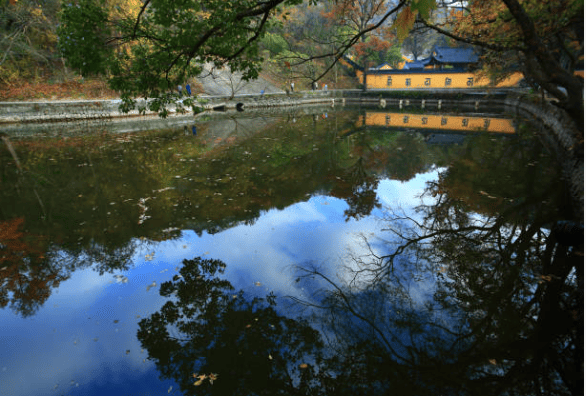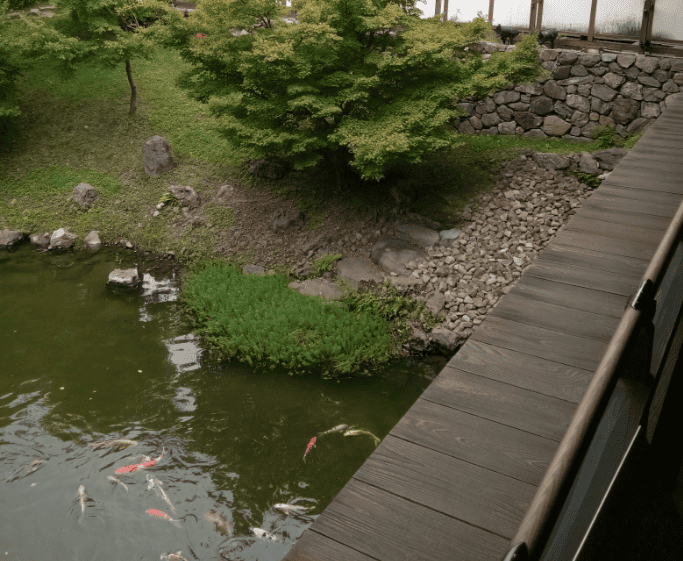Kokura Castle was built on elevated ground in the center of Kitakyushu City, making it highly strategic for transportation. This castle is very popular among visitors, partly because the legendary swordsman Miyamoto Musashi once lived in Kokura. The famous historical “Battle of Ganryu Island” between Miyamoto Musashi and his rival, Sasaki Kojiro, also took place here.

The castle’s surroundings are beautiful, with the castle towering over a new commercial complex called Kitakyushu Riverwalk. This area offers abundant opportunities for shopping, dining, and entertainment. Nature lovers and birdwatchers will also enjoy a scenic stroll along the Murasaki River, which inspired the complex’s name.
The castle tower is surrounded by a moat on two sides, with expansive castle grounds on the other two sides, collectively known as Katsuyama Park. In early April, hundreds of cherry blossom trees bloom here, creating a stunning sight. In 1998, a pond and a small Japanese garden were added within the castle grounds. Inside the garden, overlooking the castle center, is a traditional samurai study room with tatami flooring.

The most famous samurai associated with Kokura Castle is the swordsman and artist Miyamoto Musashi, who entered and resided in the castle in 1634. The garden includes a monument in Musashi’s honor. Niten Ichi-ryu, a school of swordsmanship based on his dual-sword fighting style, holds a distinguished place in Kokura’s family history.
The pleasant late-September 2024 air greeted us upon arrival at Kokura Station in Kitakyushu, Fukuoka Prefecture. According to Wikipedia, Fukuoka is located on Kyushu, the third-largest island in Japan and the southernmost and westernmost of Japan’s four main islands.
After a long five-hour journey from Tokyo by Shinkansen Sakura 555, hunger set in. Once we’d placed our bags in the hotel room, our culinary adventure began with a meal of noodles at Nishiki Udon. We ordered two types of noodles: ebiten soba (shrimp soba) and ebiten udon (shrimp udon). Soba is a brownish-gray noodle, while udon is a thick, white noodle. The shop also offered various tempura as side dishes.

Kokura is also known as “Kokura’s Luck,” a reference to its fortune in narrowly avoiding danger without realizing it. At the end of World War II, Kokura and Nagasaki, along with Hiroshima, were targeted for atomic bombing, with Kokura originally selected as the primary target. Due to smoke from the previous day’s bombing in nearby Yahata, poor visibility, and unfavorable weather, the bombing target shifted to Nagasaki, 152 kilometers away.

Like many cities in Japan, Kokura has a long history. It was once a city in Fukuoka Prefecture during the Edo period (1603-1868) and was a castle town governed by the Ogasawara and Hosokawa clans. In 1963, Kokura joined with four other cities (Moji, Tobata, Yahata, and Wakamatsu) to form the new city of Kitakyushu. With an electric rental bike, I visited several historic buildings near Kokura Station. Kokura Castle, built by the Hosokawa clan in 1602, is a city icon, standing near the grand Kitakyushu Riverwalk Mall, completed in 2003. Both locations are reachable within a five-minute bike ride from Kokura Station.
In the same complex, visitors can explore Kokura Castle Japanese Garden and Iwamatsu Memorial Watchtower. The Japanese Garden is a reconstruction of the original, modest yet serene oasis amidst nearby bustling streets. It features a large house that was once part of a daimyo’s estate, overlooking a garden and koi pond. Across from Kokura Castle lies Katsuyama Park, where the unique Iwamatsu Memorial Watchtower stands.

The Iwamatsu Memorial Watchtower honors Iwamatsu Shimonemon, who, at the end of the Tokugawa period, sold his home to finance a lighthouse off Kokura’s coast for maritime safety. The lighthouse is still used today, a testament to the dedication of a remarkable resident who devoted his life to building it.

Exiting Kokura Castle, I directed my bike to a building formerly used as the Kokura Police Station, completed in 1890 and now a protected historic site. Although it no longer serves as a police station, it has been repurposed as a shop. Not far from the former police station, I crossed the Tokiwabashi wooden bridge, spanning the river that flows through the city center. The bridge once connected the Samurai quarters on the west side to the residential areas on the east, offering a glimpse of Kokura’s past as a fortress city.
